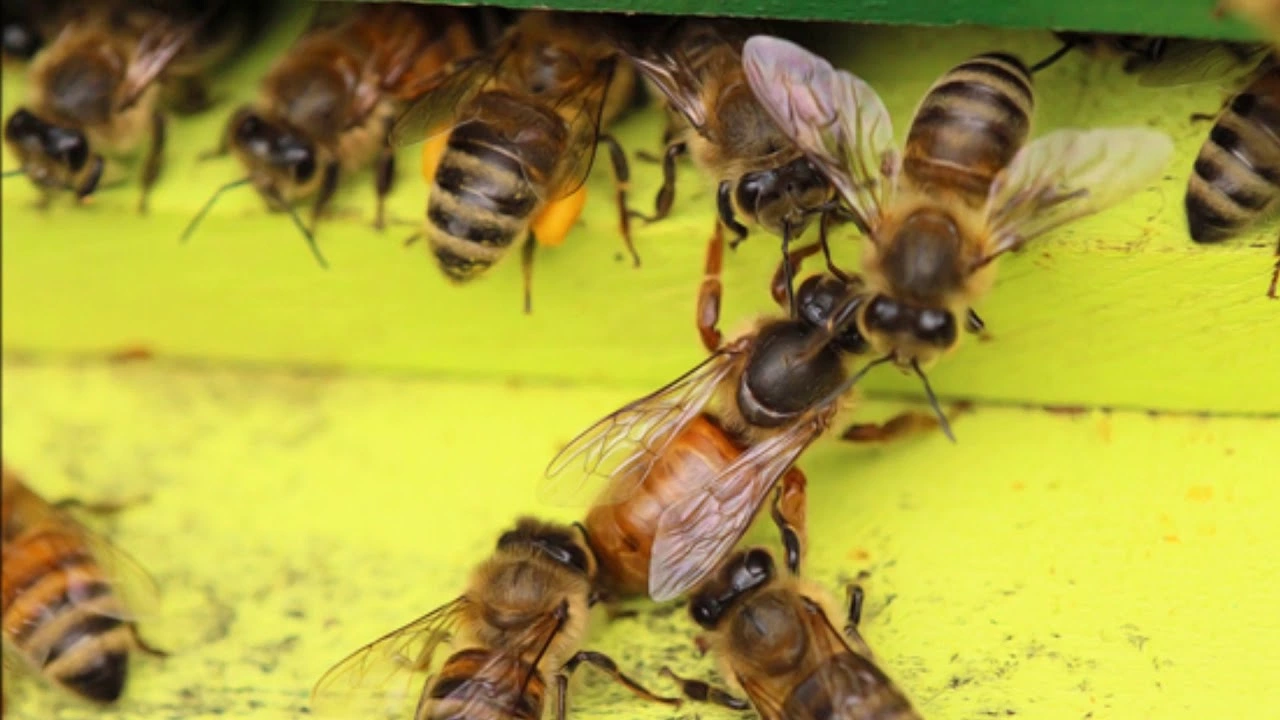
The Intriguing Sex Life of Killer Bees
Ladies and gentlemen, gather round as we embark on a fascinating journey into the life of one of Mother Nature's most misunderstood creatures - the Killer Bee. Sounds ominous, doesn't it? Well, buckle up! In the life of a Killer Bee, the romance is...actually far less romantic than you'd expect. But hey, we're talking about insects, not Jane Austen novels here.
Killer Bees, scientifically known as Africanized Honey Bees, follow a fascinating, albeit intense, process to reproduce. Only one, yes, ONE in every 1500 male bees ever gets the chance to father future generations. Challenged? Excited? Keep reading! We're just getting started.
Start with the Queen: Long Live the Mother Bee!
The prom queen of the bee world, the queen bee, is the heart and soul of the hive. She’s born, not made. Chosen from many, she’s fed "royal jelly" to speed up her growth and development. Her highness then matures within two weeks, leagues ahead of worker drones. Now, imagine, at just two weeks old, being expected to get the hive’s population booming – that's the queen bee's job. They grow up so fast, don’t they?
But a queen's life isn't all about laying up to 2,000 eggs a day. In a ritual as old as the birds and the bees, our newly hatched heroine must embark on a nuptial flight. The aim? Mating with as many drones as possible. We are not here to judge. We’re here to learn!
The Importance of the Nuptial Flight
A nuptial flight is a spectacle. Imagine watching our queen bee, dressed in her finest, flying high into the sky, pursued feverishly by a horde of adoring drone bees, each hoping for a chance to mate. This flight takes place once or twice in her life, so the stakes are high. It's a matter of survival for bees and a stark reminder for us humans that life always finds a way.
The Suitor's Sad Exit: The Drone Bee's Sacrifice
Now onto our hopeful drone's part. His mission is purely reproductive. From the moment he’s born, our little Romeo is built for a single purpose—to mate with the queen. After copulating, his life purpose is fulfilled and sadly, with his internal organs pretty much yanked out, he doesn’t live much longer. Life can sting, even for a bee!
It's all about Genetics and Selection: The Killer Bee's Survival
But how do killer bees, more aggressive than regular bees, continue to flourish? The answer lies in their sheer numbers and genetic adaptability. With each Queen bee mating with up to 15 drones, you can bet there are plenty of genes swimming around the gene pool. This genetic diversity allows the hive to adapt to changing environments and create more robust offspring. It’s all about survival of the fittest.
Nature Works in Mysterious Ways: Pheromones and Reproduction
Nature, in all its infinite wisdom, has equipped bees with a communication network that puts the best social media platforms to shame. Behold the bee pheromone! The queen secretes her own pheromone that essentially whispers into the drones' antennas, 'come hither, my knights in striped armour.' How's that for a nat-romance?
The Cycle Continues: The Birth of New Bees and Next Generation Queens
Singletons, brace yourselves. Named fertilized eggs hatch into worker bees and future queens, while unfortunately, unfertilized eggs give birth to drones, destined to live as little more than flying sperm banks. That’s nature, not very romantic, is it?
So, what now? Does this mean the end of the cycle? Far from it! New queens may hatch, but only the strongest and quickest get to inherit the hive—or start a new one. The cycle continues, ensuring the survival of the Killer Bee species.
These aren't just bees, they're lessons in evolution, survival, and adaptation. So, despite their infamous reputation, let's acknowledge the brilliance of Mother Nature, and continue to strive for a harmonious co-existence.
Conclusion: A Dance of Survival Amidst the Flowers
Killer bees have an almost mythic reputation of being ferociously territorial, menacing pests. Yet, their reproduction process is not just about creating terrorizing swarms. It's a sophisticated dance of genetics, nature's way of ensuring the survival of a species. While we may not love getting swarmed by Killer Bees during a picnic, understanding their lifecycle gives us a new perspective on these highly organized, complex creatures.
Now, when my son Finn asks, "Dad, what do bees do when they love each other?", I'll be well-equipped for a legitimate, scientifically accurate response. I might skip the bit where the drone kicks the bucket, though. There's no need to upset Pluto, our golden retriever, who, from past experiences, gets far too emotionally invested in these discussions.